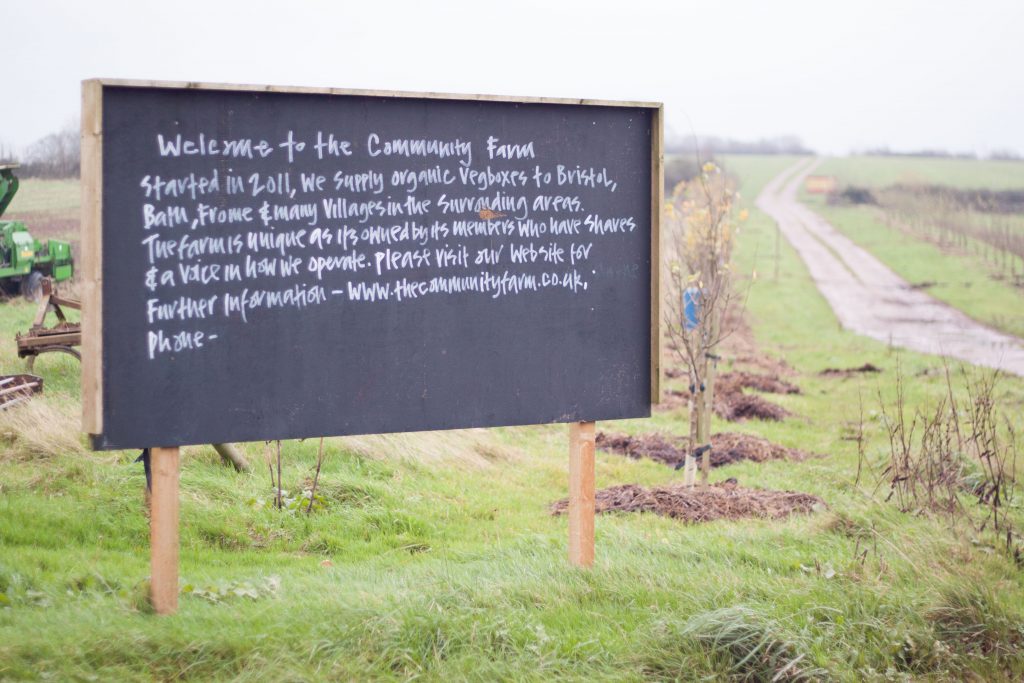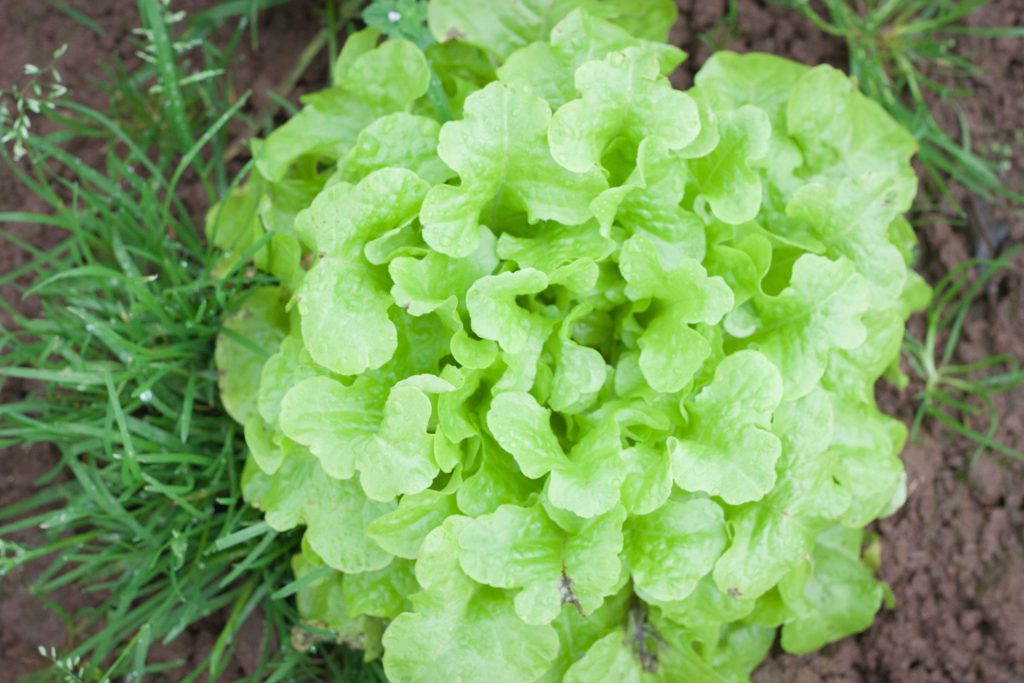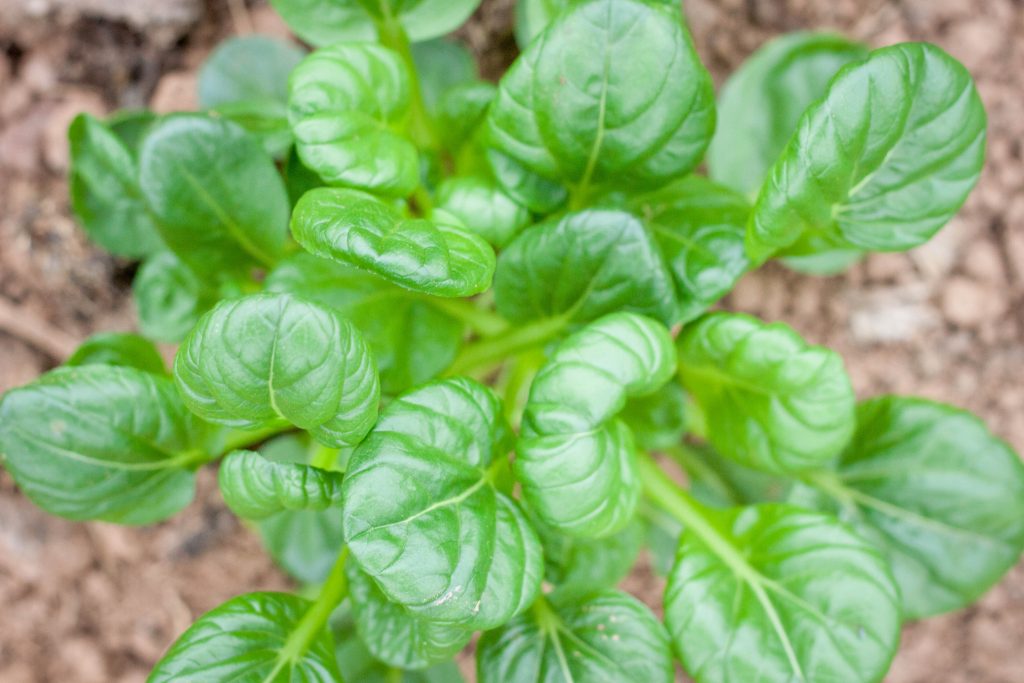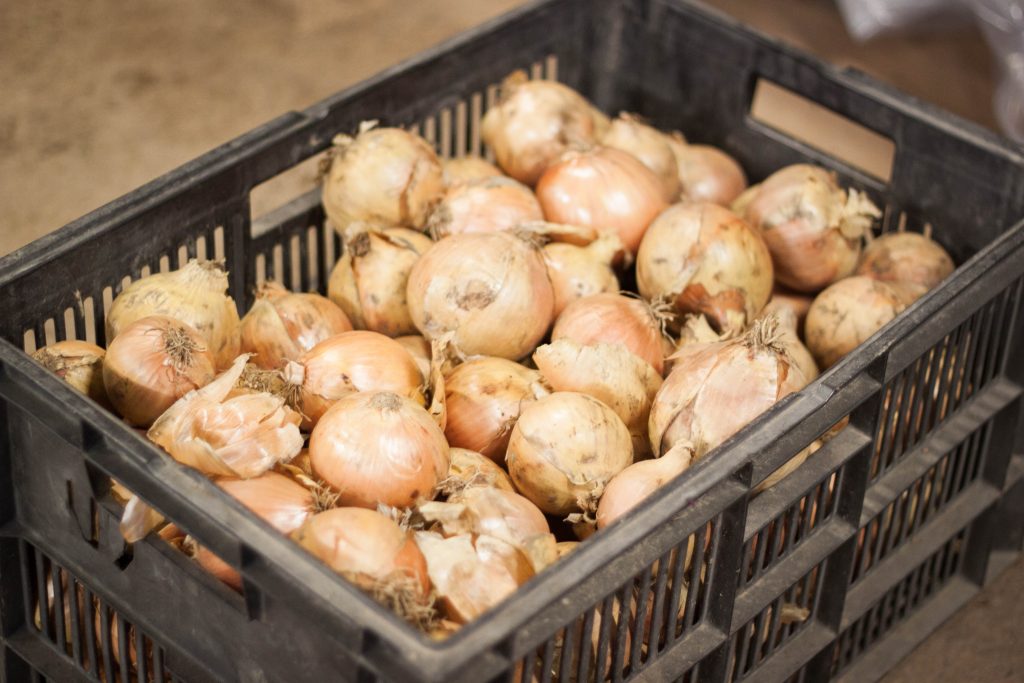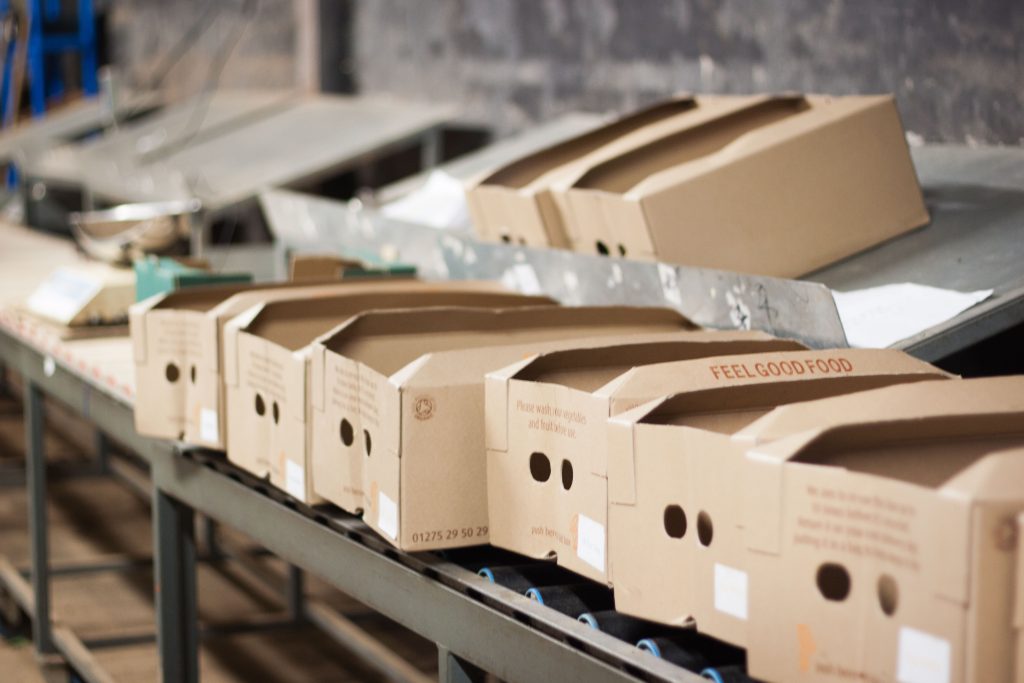This post has been reposted from The Locavore website with permission:
One of my favourite things about living in Bristol is the beautiful countryside that surrounds the city. Unfortunately, I pick a bad day for my visit to the Community Farm, and my windscreen wipers are on full speed for a good chunk of the journey there. Luckily it dries up a little as I arrive in the Chew Valley, and I arrive under darkened but dry skies.
Ian meets me out in the field, a cheerful face on a damp morning. We can see Chew Valley lake through the hazy clouds, and we go for a wander around the fields as he gives me a history of the farm. It’s different from other farms as it’s a community owned social enterprise. In 2011, a share offer was issued, with more than 500 people contributing to the £126,000 that was raised. “We rent 15 acres, and we’re currently growing on half of that,” Ian tells me as we pass some young apple trees that have recently been mulched. “Our landlord Luke is a local organic farmer, and has been part of this since the very beginning,” he continues. “He’s a very supportive landlord.”
They operate an organic box scheme that delivers to around 400 households in Bristol and the surrounding area, as well as going to the weekly Bath farmers market. They grow some of the vegetables themselves, their fields currently boasting chard, kale, cabbage, parsley and salad greens. Other produce comes from local farms. “There’s a loose cooperative; people who don’t want to necessarily get involved with a box scheme themselves, so they bring it to us and we work with them to plan and fix a price that is above the market price,” Ian explains. “It’s really good for them as they can plan with confidence at the beginning of the year and know what they’re going to get. And in return we get some really wonderful produce and security in the supply.” As well as vegetables, they also deliver fruit, dairy, eggs and a wonderful selection of dried goods. Their landlord Luke Hassel also supplies meat boxes through The Story Organic – one for a future visit perhaps.
I ask about the challenges they’ve faced over the last five years. “There’s been a bit of a learning curve with the ground,” Ian tells me as we stop to take a closer look at the soil, pointing out the issues to me as we crouch down. “Its a very light soil, so it loses its structure really easily.” He pauses; “We’ve worked out that the fertility building part of the rotation needs to be longer; not so much to add fertility but to allow the soil to regain some structure. We’re aiming to move to a 50/50 rotation, where 50% of it is cover cropped at any time, and as soon as crops are finished in September we need to plough the ground and get some of this grazing rye on it to cover it.”
We continue our walk, through long rows of cabbages and a forest of kale. Ian is the volunteer manager on the farm, with a dozen or so regular volunteers coming out each week to help out. “It’s wonderful,” he tells me, a big smile on his face. “It’s heartwarming every day because there’s people who are right into it, and come out and give their time on the farm.” As well as the regular volunteers, they also host community farmer days where the wider community come out and help. “People come and make friends, and you see that dynamic going on,” he points out. “If you went to a social event and didn’t know anyone, it can be awkward. But if you come and do something together, it’s a bit of glue to pull everyone together.”
Other than Ian and the volunteers, there’s the head grower John, an apprentice leader and three apprentices through the Soil Association Future Growers scheme. “They really help us, it’s been great,” Ian points out. As well as the field workers, there’s the staff in the warehouse and office; packers, drivers, customer service and PR. The farm also has a volunteer board of directors; “They’re incredible,” Ian confesses “It’s humbling – they’re all well skilled in some area and they’re steering and directing the farm so well.”
We stand for a moment on the highest ground surrounded by kale plants, admiring the view and ruminating on the benefits of working on the land. I ask Ian why he got into farming. “Environmental concerns. You can be part of the solution to the environmental issues we face,” he points out. His passion for working on the land is clearly evident through his work with the volunteers on the farm. “It’s really good for the soul; we’re natural beings and not machines, so it’s part of our biological heritage.”
We move from the fields towards the educational area; the yurt which acts as a sheltered learning space, and the outdoor area where kids and adult groups get their hands in the dirt. The educational side of the farm is integral to the farm’s ethos and operation, with the profits used to fund these learning experiences. “We want this to grow further, and hopefully develop a social and therapeutic horticultural garden and program,” Ian tells me. He describes his dreams for a poly tunnel, tool shed and larger covered area, as well as talking me through the plans for the garden. “It needs to be usable for a lot of different groups; hopefully there’ll be lots of different types of beds accessible to people of all ages and abilities. I’d like to see the people coming through this program being able to move into being involved in the commercial aspects of the farm,” he finishes.
In our way to the poly tunnels, we pass beautiful beds of lettuce, covered over to protect them from the deer who love to come and nibble on them. The tunnels themselves are bursting with a beautiful mix of salad greens, ready to supply the boxes over the coming weeks. We stop to nibble on some of the different leaves, tasting the variety of flavours that each bring to the mix. As we leave the tunnels, Ian’s volunteers start to arrive, so we say farewell. I ask him what he thinks is special about the Community Farm. “It’s an amazing project where ideals have become reality. It connects people with the land, their food and offers them an opportunity to be part of that.”
Find out more: http://www.thecommunityfarm.co.uk


